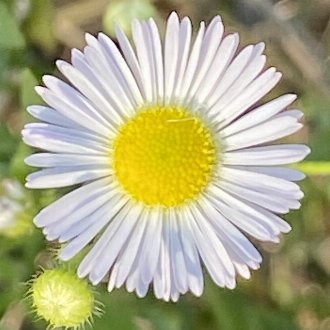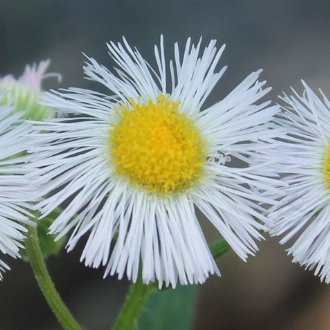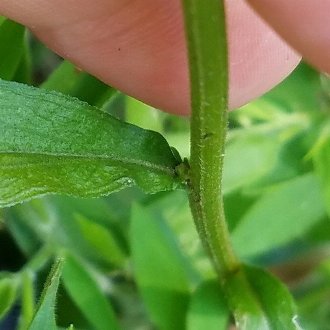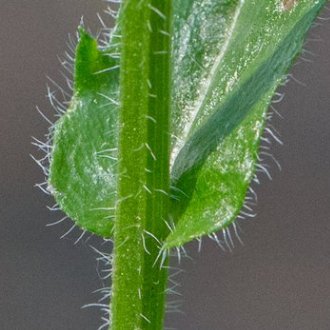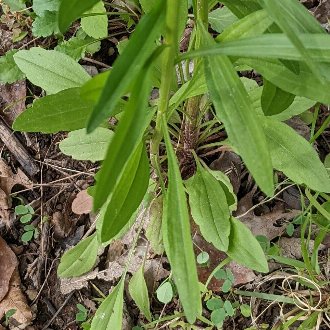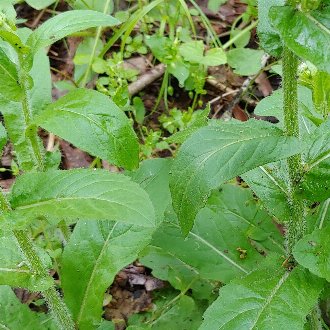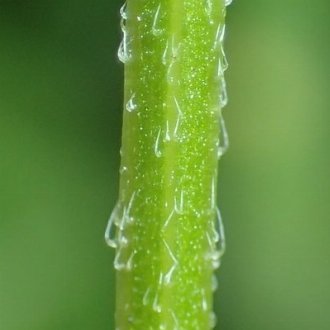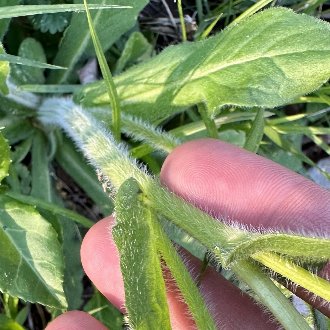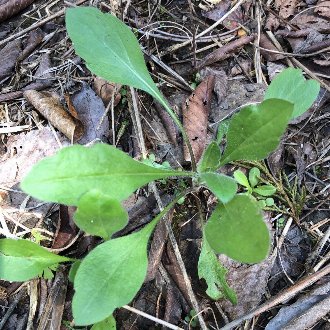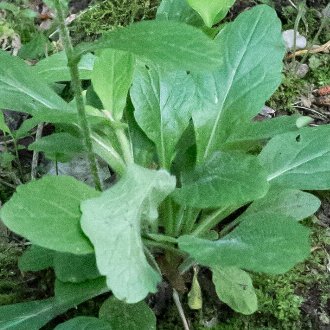Prairie Fleabane vs Philadelphia Fleabane
These two species are usually easy to tell apart whether or not flowers are present, as they have major differences in flower structure as well as leaf shape and stem pubescence. E. philadelphicus prefers moister habitats, whereas E. strigosus prefers drier habitats with less competing vegetation, but ranges farther in all directions.
Prairie Fleabane (Erigeron strigosus) | Philadelphia Fleabane (Erigeron philadelphicus) |
A common annual or biennial of sunny sites, native to much of North America, particularly abundant in the Great Plains. | A common and widely-distributed biennial or short-lived perennial of moist sites, native across North America. |
Ray florets are wider and less numerous (50-100) Photo © Sandy Wolkenberg, CC BY 4.0. | Ray florets are narrower (<=0.5mm) and more numerous (100-150), leading to a wispy appearance. Photo © Violet T., CC BY 4.0. |
Leaf bases do not clasp the stem. Photo © Leila Dasher, CC BY 4.0. | Leaf bases clasp the stem, often conspicuously. Photo © Bill Keim, CC BY 4.0. |
Leaves average narrower (5-15mm, rarely to 21mm wide) and are longer relative to their width. Leaves, especially higher up on the stem, are more consistently tapered. Basal leaves may be obovate (wider at the tip) but leaves higher up on the stem rarely are. Photo © john_hall, CC BY 4.0. | Leaves average broader (10-25mm, rarely to 40mm) and are shorter relative to their width. Leaves average a more oblong shape (more parallel sides and broader, rounded tips) and are often obovate (wider towards the tip.) Photo © Ryan Sorrells, CC BY 4.0. |
Stems are usually strigose, covered in stiff hairs, usually pressed upwards against the stem, only occasionally spreading outward (usually only near the base.) Stems consistently feel rough to the touch. On average, stems are less densely covered in hairs. Photo © John Baur, CC BY 4.0. | Hairs on stems are spreading, sometimes descending, not usually pressed upward against the stem. Stems may feel rough, but often feel softer to the touch, especially near the base. Stems look hairier on average. Photo © Emily Summerbell, CC BY 4.0. |
Basal rosettes are sparse, not usually completely covering the soil around the base of the plant. Basal leaves have long, narrow petioles (stems) and leaf blades have less surface area and are often themselves long and narrow. Photo © Gaudaceous Cress, CC BY 4.0. | At least before they wither, basal rosettes are dense and lush, often completely covering the soil around the base of the plant. Basal leaves are broader and have more surface area, with broad portion of leaf extending over more of its length. Photo © Bill Keim, CC BY 4.0. |
Additional Notes
The broader leaves of E. philadelphicus reflect its preference for moister habitats than E. strigosus, as well as its greater shade-tolerance.For plants that look like Erigeron strigosus, also check against annual fleabane (Erigeron annuus), as those two species are more visually-similar than these two are.
Although both of these species are native in the eastern to central portions of North America, E. strigosus is not originally native west of the great plains, but has expanded its range westward. E. philadelphicus however is native to both east and west, albeit with a much larger gap between the eastern and western portions of its range in Montana and Wyoming.
References & External Resources
These short lists show only links helpful for ID. For a complete list of references and resources also covering other aspects of ecology, visit the links section of the full article on each plant, which is the first entry here.



